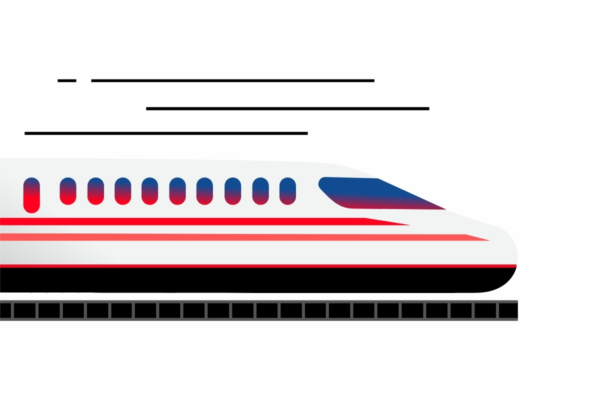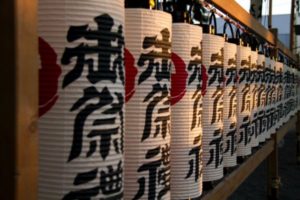.
One of the best decisions you can make for your trip to Japan is to purchase a Japan Rail Pass. With this physical ticket, you can make the most of the extensive and reliable train network connecting every corner of Japan. Here’s everything you need to know about the Japan Rail Pass, from what it is and where it works to how you can get the most from it
What is the Japan Rail Pass?
Japan is known worldwide for its extremely efficient rail network that extends across the country. No matter where you want to travel across its four largest islands, you’re likely to find a train connection that can get you there. As such, it’s one of the best ways for international visitors to get around Japan.

Several factors contribute to the quality of Japan’s rail network. One is that the network is made up of a combination of different types of trains in Japan, such as local, regional, and high-speed trains, the last of which is the famous bullet train or shinkansen. Another factor is the extreme dedication it has to punctuality, with the average delay for Shinkansen trains just a matter of seconds. It also doesn’t hurt that stations are quite easy to navigate, with English signs and information available throughout.
But really, one of the most important reasons why train travel is so good for tourists is the Japan Rail Pass. With this one pass, foreign visitors gain unlimited travel all over Japan using trains operated by the Japan Railways (JR) Group. Composed of JR Central, JR East, JR West, JR Kyushu, JR Hokkaido & JR Shikoku, this group of six companies provide a whole range of regional and intercity train services, including shinkansen services. Using a JR Pass, you can freely travel as much as you like around Japan and potentially save lots of money in the process.
Who Can Use the Japan Rail Pass?

When looking into buying a Japan Rail Pass for your trip to Japan, you must understand who is eligible to use the pass. This is because the pass is not available for everyone and has strict requirements regarding nationality and visa status. We will go over all of this in this Japan Rail Pass Guide.
The Japan Rail Pass is only available for non-Japanese nationals on short tourism visits and Japanese nationals who live outside Japan and meet certain conditions. This means the Japan Rail Pass passenger must enter the country on a single-entry temporary sightseeing visitor visa of 15 or 90 days duration. It is not eligible for passengers who hold any other entry status or visa type regardless of duration, such as long-term visas which allow staying in Japan for more than 90 days, student visas, permanent residency visas, Tokubetsu Eijuken holders (Special permanent residency visa), entertainer visa, working holiday visa, military entry status, or any other visas which are not a temporary visitor visa with the purpose of sightseeing. To learn more about public transport in Japan check out our article on How To Travel in Japan.
How the Japan Rail Pass Works
Because the Japan Rail Pass doesn’t work quite like an ordinary train ticket, the process of using it in the real world isn’t always clear. To ensure that there aren’t any problems for you when using the JR Pass, here’s a step-by-step guide to using your Japan Rail Pass.

- Purchase Your Pass: The best way to buy your pass is from an authorized vendor before leaving for Japan. That’s because, while it’s possible to buy the pass when you get to Japan, it’s cheaper when bought from outside the country. Do know that passes can only be purchased up to 6 months in advance of the date you plan to use it, so don’t get too eager.
- Exchange Order: Once you’ve purchased your pass, JRPass.com will send a slip of paper called an “Exchange Order” to you in the mail wherever you are in the world.
- Go to an Exchange Office in Japan: Having arrived in Japan, visit a Japan Rail Pass Exchange Office before trying to travel anywhere with your pass, bringing your Exchange Order and passport with you.
- Get Your Japan Rail Pass: Once at the office, you’ll hand both your order and passport over and fill out a form identifying your “Activation Day”, i.e., the date you would like to start using your Japan Rail Pass. Note that this date cannot be changed afterwards and must be within one month of receiving the pass.
- Travel with your JR Pass: On the activation day you chose, look for the JR symbol at the station. Once at the turnstiles, show the attendant your pass and they’ll allow you to enter.
What Does the Japan Rail Pass Cover?
To avoid any confusion or problems when travelling by train with a Japan Rail Pass, it’s useful to know what it does and doesn’t cover. That’s because the JR Pass does not cover all train travel in Japan; it covers unlimited travel on most high-speed, limited express, express, rapid, and local JR train services. But like with everything in life, there are exceptions, as well as a few bonus inclusions in this Japan Rail Pass Guide.
Inclusions

Beyond the variety of JR train services on the classic network listed above, there are some specific train services that are included, such as:
– The Narita Express between Narita Airport and Tokyo;
– The Tokyo Monorail between Haneda Airport and Tokyo; and
– Local trains in cities like Tokyo operated by JR Group like the especially useful Yamanote loop line.
Exclusions
While the JR Pass covers trains in the JR network, there are a few notable exceptions. The most important are the Nozomi and Mizuho shinkansen services, which run on the Tokaido, Sanyo, and Kyushu shinkansen lines. Luckily, there are other Shinkansen services on these routes that are covered under the JR Pass, so this shouldn’t be too much of a problem. Of course, private railways operated outside of the JR Group and city metros are also excluded from this rail pass.

Buses and Ferries
Beyond trains, the JR Pass is also able to be used on various other forms of transport operated by the JR Group. This includes the network of local buses operated by Japan Rail. Moreover, they bear the JR logo on the bus and their bus stops. While you can check the full guide to JR buses, some local JR buses cover cities like Sapporo, Hiroshima, and Fukuoka. Do note that JR highway buses are no longer included. One other unusual inclusion in the JR Pass is the Hiroshima-Miyajima ferry. It takes people to the popular attractions on the island of Miyajima in Hiroshima Bay.
How Does the Japan Rail Pass Save Money?

A big part of asking whether a rail pass is right for you is understanding how it can potentially save you money. This is true for any kind of rail pass anywhere in the world. To fully understand the value of a Japan Rail Pass. It’s worth comparing the cost of the pass with that of individual tickets. General and high-speed train fares in Japan are particularly expensive in comparison to other countries in the world. This means that when you add up the cost of a long list of single-trip tickets. Then compare it with the cost of the JR Pass you’re going to see some enormous cost savings.
For perspective, the cost of a 7-day Japan Rail Pass is roughly the same as a round-trip ticket between Tokyo and Kyoto. And yet, by paying a little more for the JR Pass you have seven days of train travel all over Japan, and not just that one round trip.
How to Plan Your Rail Pass Journey
Once you’ve purchased your Japan Rail Pass and understood what’s included. It’s time to figure out how you’re going to use it to make your dream trip a reality. If you’re still at the brainstorming stage of planning. It will probably help to first take a look at the Japan Rail Pass Map. This map allows you to see the train routes available with your JR Pass in great detail. Not only does it show the Shinkansen and regional JR lines that are valid with your pass. But it also separately highlights private railways, trams, and ropeways not included. That way, you can see how much of your journey is covered/not covered using the Japan Rail Pass Guide.

Once you’re ready to start scheduling your train travel, you’ll want to use a timetable and route tool like Hyperdia. This app and website allow you to enter your route and find the different departures available. To best use Hyperdia for your Japan Rail Pass, it’s recommended that you de-select both “Nozomi/Mizuho” and “Private Railways” under “More Options”. De-selecting these options will then show you routes covered only by your JR Pass.
What Pass Options Are There?
Because everyone travels differently, several options allow you to tailor your Japan Rail Pass to your travel requirements. The first option regards the duration of your pass, with 7, 14, and 21-day durations available. This allows you to choose the right length to pass for your trip. There are also different passes for adults and children, providing a greatly discounted rate for children ages 6 to 11. (Note: Children ages 0 to 5 travel free if they don’t need a seat.)
One other way you can customise your Japan Rail experience is to upgrade your pass to Green Class. With a JR Green Pass, you are treated to the Japan Rail version of 1st Class travel. It includes wider seats in the quieter, more luxurious first-class carriages, along with other conveniences.
How to Do Seat Reservations Work?
One of the many benefits of travelling with a Japan Rail Pass is that it simplifies the process of making seat reservations when you travel by train. That’s because you get free seat reservations with your JR Pass. This allows you to secure a seat on a Shinkansen, limited express, or express train covered by the pass.

Is There Food on Board the Trains?
There’s little chance of you going starving as you travel by train in Japan. For starters, it’s quite common for passengers to purchase food and drinks before boarding. There are even special Japanese packed lunches that are sold in train stations called ekiben. Providing you the opportunity to explore more traditional Japanese food while on the train.
As for getting food while onboard a train, you generally choose between vending machines and the refreshment trolley. Both serve up a variety of drinks and snacks, while the refreshment trolley also offers ekiben as well. Trains in Japan do not have a restaurant car like in Europe.

Do Trains Have Amenities like Wi-Fi and Power Sockets?
To help you enjoy your journey, you’ll find power sockets with the standard Japanese configuration for nearly all Shinkansen and a majority of limited expresses. As for staying connected, free onboard Wi-Fi is increasingly available. With it already available on the Tokaido, Sanyo, and Tohoku lines. If having the internet is important to you, you can hire a Pocket Wi-Fi device. This is to ensure you have WiFi access no matter where you are. That’s it for this Japan Rail Pass Guide, see you in the next one.















































